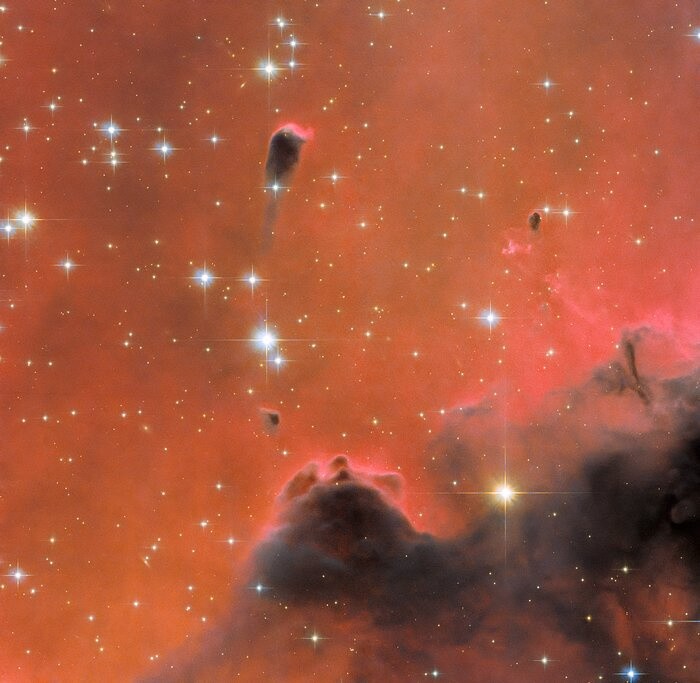A festive galactic spectacle shines bright in red as NASA's Hubble Space Telescope captured a star-glittered backdrop that looks like the space is celebrating its own Christmas.
The stunning images feature a small portion of the nebula Weserhout 5, or also known as the Soul Nebula. This interstellar wonder hails 7000 light-years away from our planet Earth.

Free-Floating Bubbles
Bright orange-red clouds with varied densities cover the image's backdrop. Several huge, pale blue stars with distinct cross-shaped spikes are also strewn in the top-left corner of the picture.
ESA wrote in its news release that one of these stars is surrounded by a tiny, black patch that resembles a tadpole. The lower right of the image is filled with thick, dark vapor that looks like black smoke. In front of it, a little blue star and a brilliant yellow star are visible as well.
Several intriguing elements can be found in this glowing image, including a free-floating Evaporating Gaseous Globule (frEGG). The tiny, black area in the upper center-left of the picture that resembles a tadpole is the frEGG.
Two names are attached to this buoyant-appearing bubble: [KAG2008] globule 13 and J025838.6+604259.
A specific type of evaporating gaseous globule is called a FrEGG (EGGs). The patches of gas known as frEGGs and EGGs are sufficiently dense compared to the less compact gas encircling them to enable their slow photoevaporation, according to ESA.
Read Also : NASA's Hubble Space Telescope Snaps a Brilliant Pair of Stars Sparkling Amid the Mystical Orion Nebula
Photoevaporation
Photoevaporation takes place when a young, brilliant star releases a considerable amount of UV light, ionizing the gas and scattering it away.
EGGs were only recently discovered, most notably near the tips of the Pillars of Creation, which Hubble photographed and immortalized in famous photographs published in 1995 and was recently captured by the newly-minted James Webb Space Telescope.
FrEGGs, which were only recently discovered as well, differ from EGGs since they are detachable and have a head-tail form.
It is worth noting that the density of FrEGGs and EGGs makes it hard for strong ultraviolet radiation to pass through them. Hence, astronomers are keen on studying these galactic objects.
Additionally, ESA said that they are relatively opaque, shielding the gas inside from ionization and photoevaporation. It is believed that numerous FrEGGs and EGGs serve as the birthplace of new stars because they are also thought to be crucial in the production of protostars.
In this picture, the frEGG is the dark speck within the background of red light. The image has a distinctive red color due to H-alpha emission, which is a specific type of light emission. This happens when an extremely energetic electron inside a hydrogen atom loses a specific amount of energy, leading to the electron becoming less energetic and releasing a red light.

ⓒ 2025 TECHTIMES.com All rights reserved. Do not reproduce without permission.




